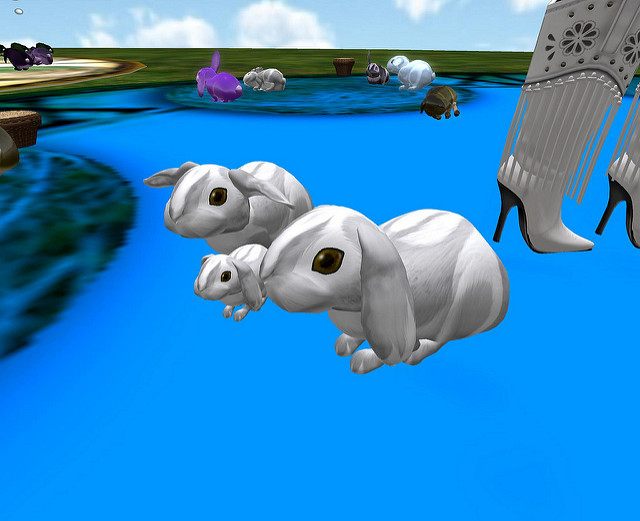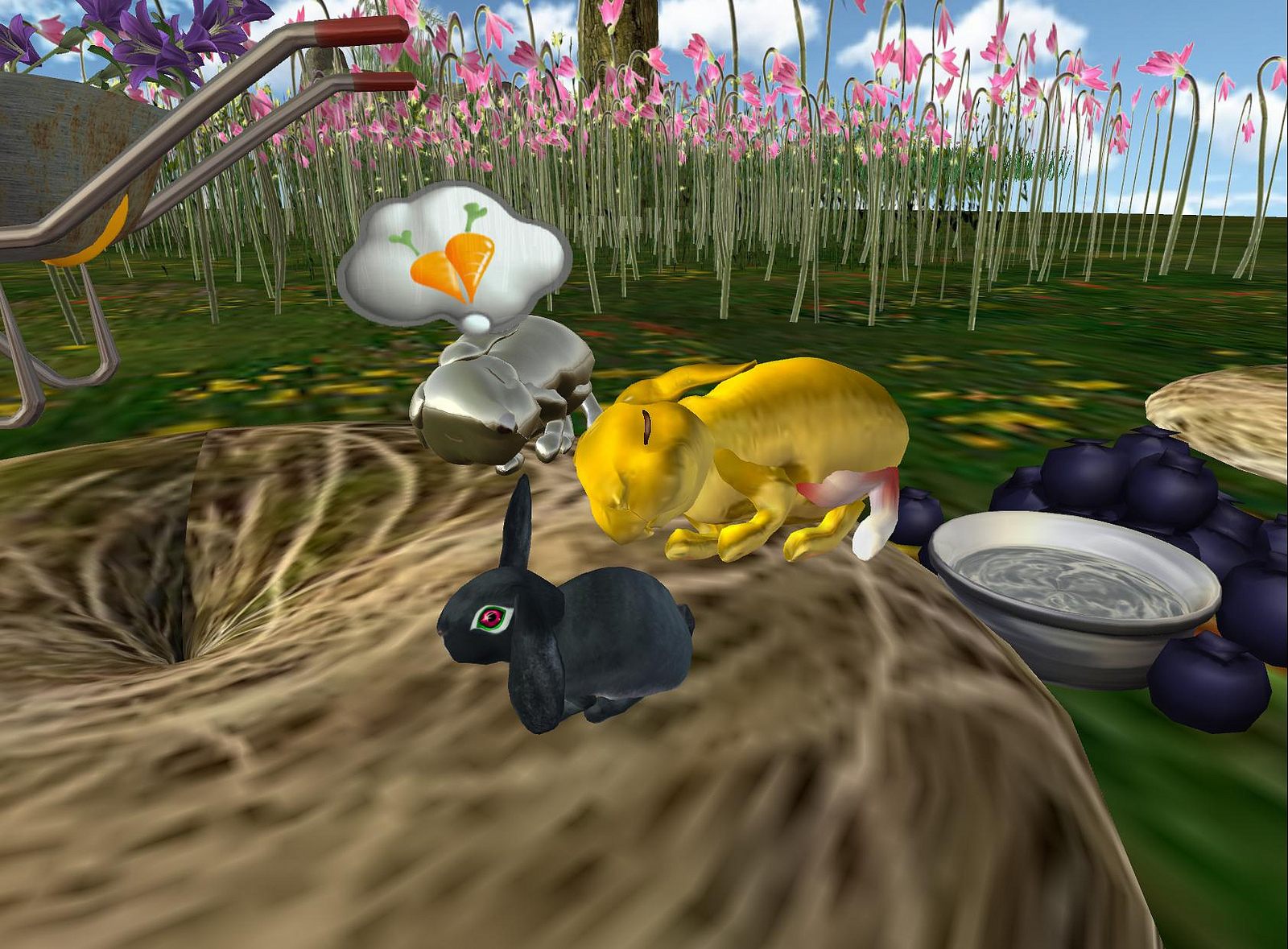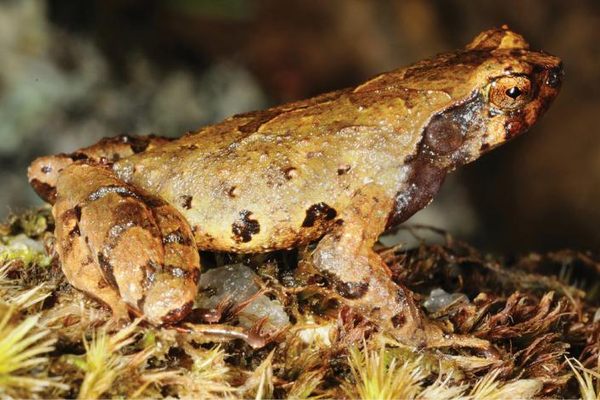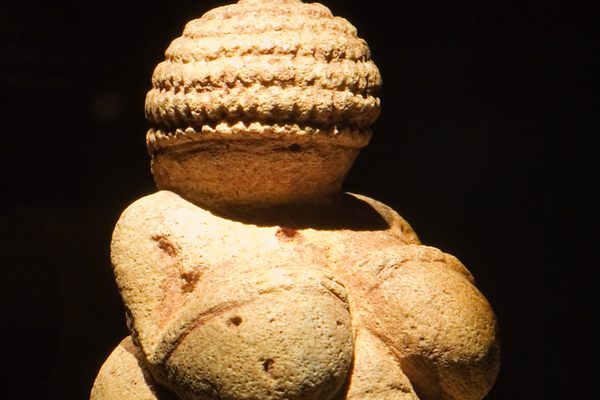Bunnies Have Gone Extinct in Second Life’s Virtual World
A catastrophic resource shortage plays out online.

Again and again, survival proves more fragile than we know. Dozens of frog and toad species are felled by a fungus. A porpoise that seems literally too cute to die is snared into near-oblivion. Bird flocks that once blocked out the sun disappear forever, shot down by an entire continent of gunmen.
This past week, the scourge of extinction crept somewhere novel: online. Two types of animal unique to the game and online community Second Life were rocked by a man-made catastrophe. Every single Ozimals bunny in the virtual world is now either sterile or asleep forever. Another species, the Puffling, is simply gone. Those who said “It can’t happen here!”—read on.
If you’re unfamiliar with it, Second Life is a massive multiplayer online role-playing game with no set objective—users choose or build avatars, and then basically do whatever they want. It’s the largest user-generated digital world ever created and, like the physical world, it’s full of wonders—cornfield art installations, neon marketplaces, massive shapeshifting sandcastles.

Like any world worth its salt, it also has a thriving bunny population—or at least it used to. Tons of subcompanies operate within Second Life, selling everything from avatar hairstyles to magic wands. As reporter Janine Hawkins explains over at Waypoint, one of these companies, Ozimals, trafficked specifically in two types of pets: bunnies that came in many textures and colors, and “Pufflings,” perfectly round birdlike creatures with huge eyes.
As with real bunnies, these virtual rabbits could be bred to create bunny families, along with more color combinations. But unlike real bunnies—and to ensure that their parent company continued to reap a profit from their self-propagating creations—they needed to eat very specific, DRM-protected food sold only by Ozimals.
Sadly for the rabbits, that company has been roiled by legal troubles. Two former Ozimals employees allege that the company’s current owner, who goes by the name Malkavyn Eldritch, does not have the right to use their bunny designs, due to an unauthorized transfer of company assets. Last Tuesday, Eldritch announced on his blog that, due to a legal threat from these former employees, he had been forced to shut down the servers that keep the Pufflings running and store the bunny food.

He laid out the consequences very clearly: “Pufflings will cease to function,” he wrote. “Any bunny who is not Everlasting will be unable to eat and will hibernate within 72 hours.” (Everlasting bunnies, which have been charmed by a special timepiece, don’t need to eat—so they will stay alive indefinitely, although they will no longer be able to breed.)
Bunnies need to eat every few days, and the shutdown occurred on Wednesday, May 17—so most of Second Life’s rabbits are in eternal hibernation at the time this story is being written. So far, the bunny-owners have been keeping it together. There’s a support group going, as well as a fundraiser for Eldritch.
Maverick conservationists have come out of the woodwork as well, to provide interested users with bunny survival packages that include Everlasting timepieces. The situation may even create a Second Life version of Earth’s de-extinction movement. In a comment, one user volunteered to “come up with a way of reviving the hibernated rabbits” by “emulating the database server.” George Church would be proud.

Ozimals bunnies and Pufflings aren’t “real.” Their disappearance doesn’t negate billions of years of gradual evolution, and their absence won’t cause a cascade of unpredictable ecosystem troubles. To frame this as a truly vaquita-level event does a disservice to conservationists, not to mention the vaquitas themselves (or white rhinos or Bornean orangutans).
But for everyone who hoped that virtual life would be free of real life’s troubles, let this be a warning: A lack of resources, and the inability of humans to work together to find a solution, can lead to extinction just about anywhere.
Every day, we track down a fleeting wonder—something amazing that’s only happening right now. Have a tip for us? Tell us about it! Send your temporary miracles to cara@atlasobscura.com.









Follow us on Twitter to get the latest on the world's hidden wonders.
Like us on Facebook to get the latest on the world's hidden wonders.
Follow us on Twitter Like us on Facebook